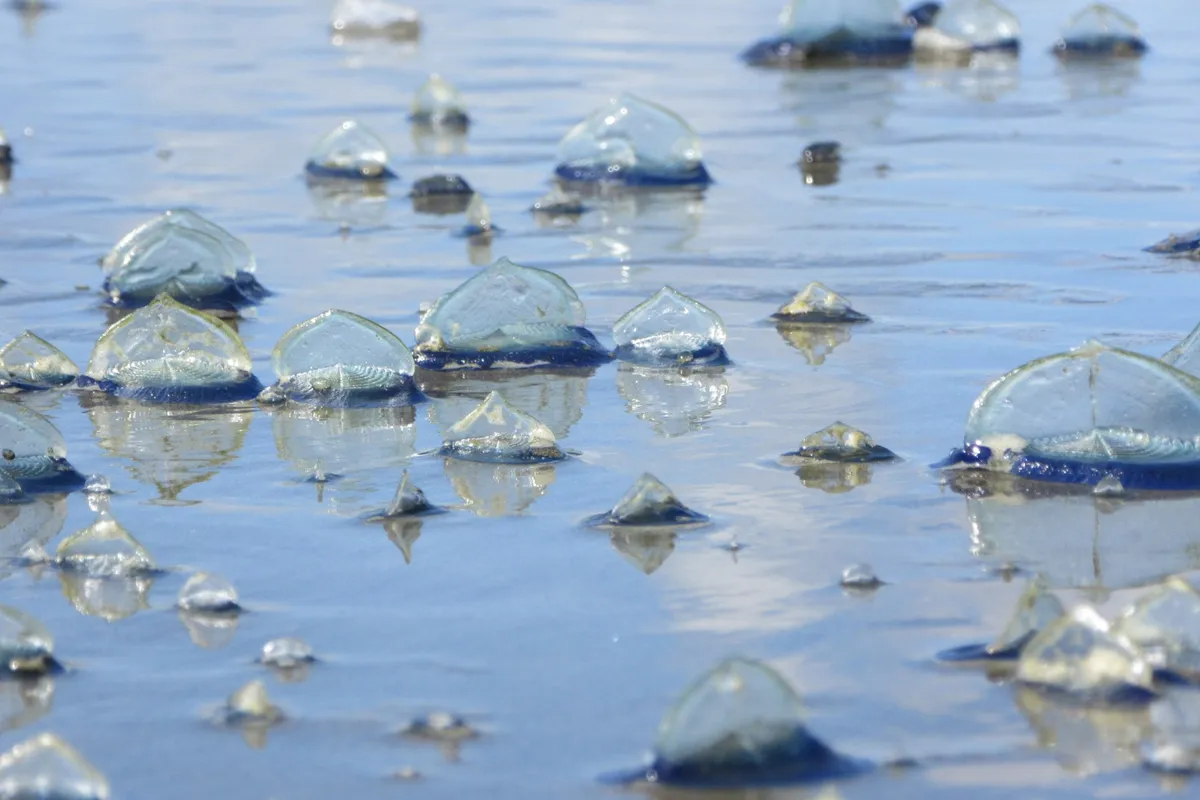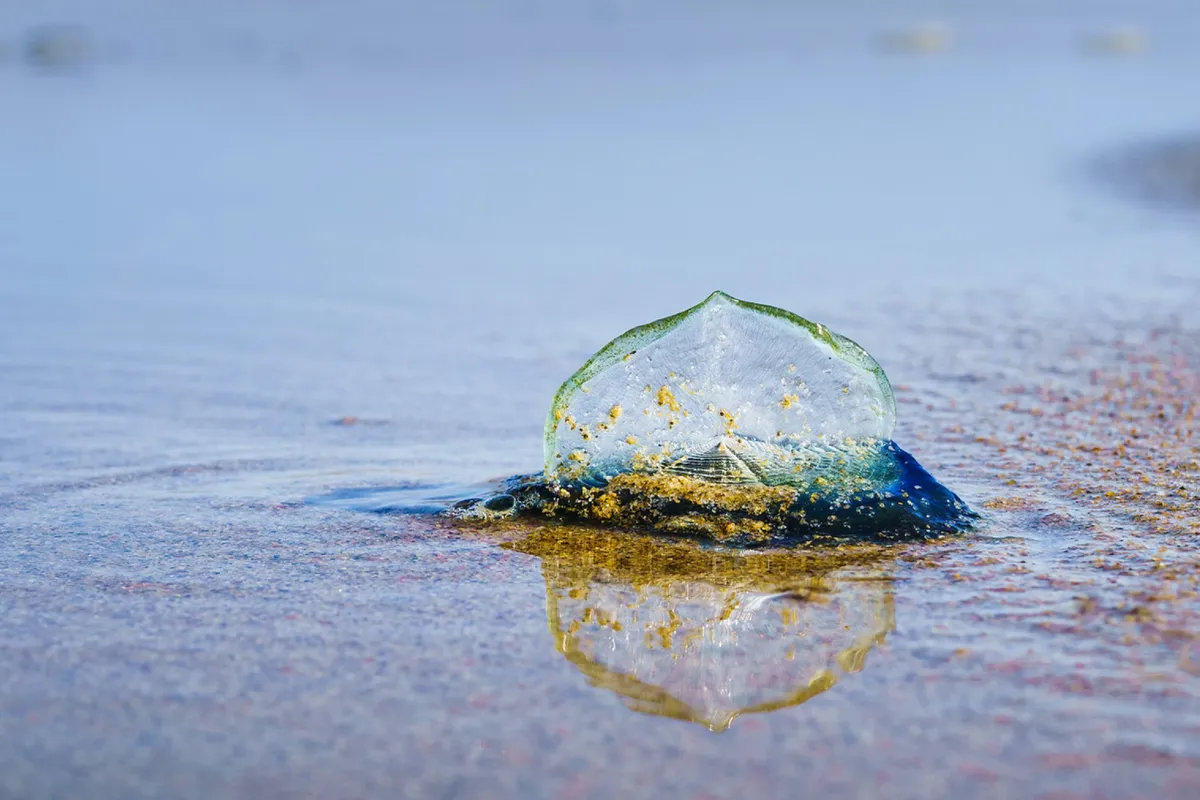A ‘blue tide’ of otherworldly creatures have been washing up in Guernsey (one of three island territories within the British Isles), following strong winds.
The bizarre oval animals are known as by-the-wind sailors (Velella velella) because of their distinctive ‘sail’, which allows them to catch a ride on the breeze to travel around the ocean.

- Video captures incredibly rare (and very cute) seahorse in Cornish waters
- A Somerset schoolgirl has discovered what may be the largest marine reptile ever found
- 185 hectares of new seagrass meadows discovered in UK waters
What are by-the-wind sailors?
These electric blue critters live in warm and temperate oceans around the world. They can be up to 10cm long and each individual is actually a colony of organisms.
They have an oval disc – called the float – with short tentacles hanging below and a stiff diagonal fin above, which acts like a sail.
According to the Marine Life Information Network (marLIN), “the direction of the sail along the float determines which way Velella velella will travel. If the sail runs north-west to south-east along the float it will drift left of the wind direction, if the sail runs south-west to north-east it will drift right of the wind direction.”

What causes these mass strandings?
Strong winds around the Channel Islands are probably the cause of these sailor colonies washing up on beaches. “They are at the mercy of the winds and so are usually found washed up in their hundreds, or sometimes even thousands, after stormy winter weather,” says the Wildlife Trusts.
By-the-wind sailors are in the Cnidaria group of animals, meaning they’re related to jellyfish, corals and sea anemones.
“Cnidarians have two body forms: the umbrella-shaped, tentacle-trailing 'medusa', your classic jellyfish; and 'polyps', such as sea anemones that typically live attached to the seabed,” explains Cathy Lucas, a marine biology professor at University of Southampton. “Velella is a colony of specialised individual polyps, much like their fellow sailors the Portuguese Man o’ War. Instead of living attached to rocks on the seabed, the water surface has become its substrate,” she says.

Their stinging tentacles – which are usually harmless to humans – help them catch their prey: usually plankton or small fish. Meanwhile, they are food for other ocean animals including blue dragon sea slugs (Glaucus atlanticus) and purple snails (Janthina janthina).
By-the-wind sailors can’t survive out of the water so those that wash up will die on the tideline. Mass strandings like this can happen anywhere when the wind pushes the creatures onshore but it’s odd to see this in Guernsey in April, says local marine biologist Richard Lord: “We often see them, but it is a little unusual to have them at this time of year as they normally get blown ashore in the autumn.”
Discover more fascinating blue animals - including a blue bee
- Which jellyfish live in British waters?
- A beginner's guide to British seaweed
- A quick guide to starfish
Words: Melissa Hobson